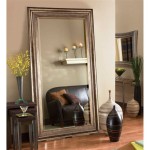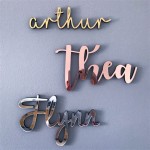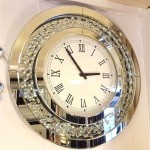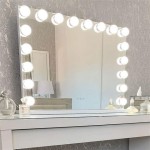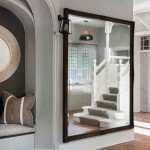Why Are Concave Mirrors Used in Searchlights and Headlights?
Concave mirrors are a crucial component of many optical devices, including searchlights and headlights. Their unique reflective properties allow for the creation of strong, directed beams of light, making them ideal for these applications. Understanding the principles behind concave mirrors and how they function helps explain their prevalence in these technologies.
A concave mirror possesses a reflecting surface that curves inward, resembling the interior of a sphere. This curvature allows the mirror to focus incoming parallel rays of light onto a single point, known as the focal point. The distance between the mirror's surface and the focal point is called the focal length. The focal length and curvature of the mirror are intrinsically linked; a more deeply curved mirror has a shorter focal length.
The behavior of light rays reflecting off a concave mirror is governed by the laws of reflection. These laws state that the angle of incidence, the angle at which the light ray strikes the mirror's surface, is equal to the angle of reflection, the angle at which the light ray bounces off. This predictable behavior of light rays allows for controlled manipulation of the reflected light.
When parallel rays of light, such as those emitted from a light source in a searchlight or headlight, strike a concave mirror, they are reflected towards the focal point. This convergence of light rays produces a highly concentrated and intense beam. The precise positioning of the light source relative to the mirror's focal point determines the characteristics of the reflected beam.
In searchlights, the light source is typically placed at or near the focal point of the concave mirror. This configuration results in the reflection of a strong, parallel beam of light. This parallel beam can travel over long distances with minimal divergence, allowing the searchlight to illuminate distant objects. The intensity and directionality of this beam are crucial for applications such as search and rescue operations and spotlighting performances.
Headlights utilize a similar principle, employing a concave mirror to direct the light emitted from the bulb. However, in headlights, the light source is placed slightly away from the focal point. This offset positioning creates a beam that is slightly diverging, providing a broader spread of illumination across the road ahead. This broader beam is essential for safe driving, ensuring visibility of the road's edges and potential hazards.
The shape and size of the concave mirror are critical factors in determining the properties of the reflected beam. Larger mirrors can collect more light, resulting in a brighter beam. The curvature of the mirror determines the focal length, which in turn affects the beam's divergence and intensity. Careful selection of these parameters allows for the optimization of the headlight or searchlight's performance for its specific application.
The material of the mirror also plays a significant role. Highly reflective surfaces, like silvered glass or polished metal, maximize the amount of light reflected, enhancing the brightness and efficiency of the system. The durability and resistance to corrosion of the mirror material are also essential considerations, particularly for outdoor applications like headlights and searchlights.
Other types of mirrors, such as convex mirrors, exhibit different reflective properties. Convex mirrors diverge the incoming light rays, creating a smaller, virtual image. While useful for applications like security mirrors, their diverging nature makes them unsuitable for creating concentrated beams of light required in searchlights and headlights.
The use of concave mirrors in searchlights and headlights is a practical application of the laws of reflection. Their ability to focus and direct light efficiently makes them an essential component in these devices, facilitating enhanced visibility and safety in various situations. The specific configurations and materials used in each application are tailored to optimize the light beam's characteristics for its intended purpose.
Advancements in materials and manufacturing techniques continue to improve the performance and efficiency of concave mirrors used in optical devices. The development of more reflective coatings and precise shaping methods allows for even greater control over the reflected light, leading to brighter, more focused beams. These advancements are crucial for improving the effectiveness of searchlights and headlights, enhancing safety and visibility in various applications.
The principles governing the behavior of light rays interacting with concave mirrors are fundamental to understanding the function of many optical instruments. From simple magnifying glasses to complex telescopes, the ability to manipulate light using curved reflective surfaces enables a wide range of applications, impacting various fields from science and technology to everyday life.

How A Concave Mirror Is Used In Headlights And Searchlights To Throw Light At Long Distance Homework Study Com

Which Type Of Mirror Is Used In Headlights Vehicles

Concave Mirror Are Used In Torches Amp Car Headlights Give Scentific Reason Brainly
Why Is A Parabolic Mirror Used In Searchlights Quora

A Concave Mirror Is Commonly Used In Torches Draw Ray Diagram To Show The Working Of These Optical Brainly
What Is The Use Of A Concave Mirror In Torch Quora

Why Are Parabolic Mirrors Used In Headlight Design Do They Focus All Rays On The Same Point After Reflection From Surface Quora

Ray Diagram For Search Lights Torches Vehicle Headlights Brainly In
Why Should We Use A Parabolic Mirror Instead Of Concave Quora

Uses And S Of Concave Mirror

